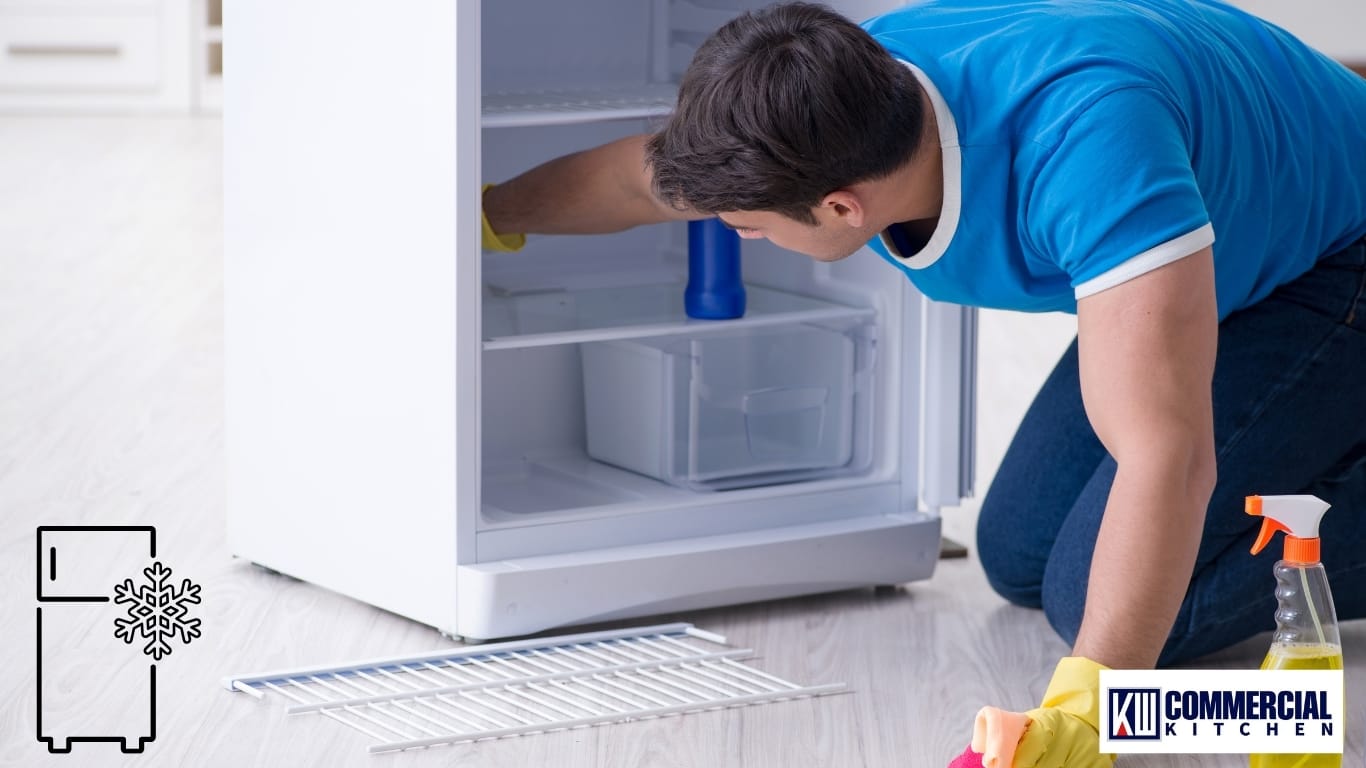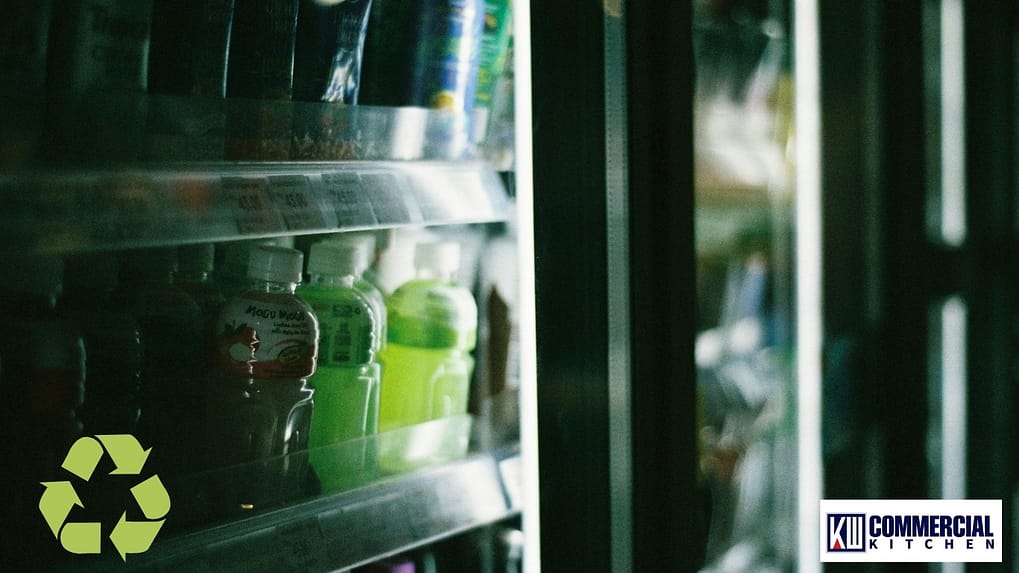EEI under GEMS 2024: the Australian refrigerated‑cabinet guide buyers actually use
This is a practical, regulation‑accurate playbook for cafés, QSRs, bakeries, convenience retail and venue managers. Learn how to confirm compliance under GEMS (Refrigerated Cabinets) Determination 2024, read EEI with confidence, estimate running cost in minutes, and build a shortlist that holds food safely at ≤ 5 °C without blowing your power bill.
Last updated: 19 Aug 2025 • Author: KW Commercial Kitchen Team • Cities served: Sydney, Melbourne, Brisbane, Perth, Adelaide, Canberra, Hobart, Gold Coast
Executive summary
- Australia’s updated GEMS (Refrigerated Cabinets) Determination 2024 entered into force 5 Oct 2024. It streamlines standards and marking-plate rules; MEPS remain expressed via EEI. Energy Rating: Refrigerated cabinets; Streamlining update.
- EEI (Energy Efficiency Index) is the compliance metric; use EEI to compare efficiency within a product class, and kWh/24 h to estimate your bill. Official guidance.
- Energy Rating star labels are not mandatory for these commercial cabinets, but a star rating (if used) must follow Schedule 5 and is recorded in the Registration Database. Energy Rating (industry).
- Climate classes 3/4/5 define the ambient test room (25 °C/60% RH; 30 °C/55% RH; 40 °C/40% RH). Match your selection to realistic site conditions. Schedules & test rooms.
- FSANZ anchors: keep potentially hazardous food at ≤ 5 °C (or ≥ 60 °C), and apply the 2‑hour/4‑hour rule when food leaves temperature control. FSANZ: Right temperature; FSANZ: 2‑hour/4‑hour.
What changed on 5 October 2024?
The Greenhouse and Energy Minimum Standards (Refrigerated Cabinets) Determination 2024 updated the regulatory framework without changing the fundamental MEPS concept (EEI). It incorporates recent international standards for testing and clarifies marking‑plate details with transitional provisions. See the program’s “streamlining” update and the instrument as tabled (reference F2024L01263). For a quick orientation, use the Energy Rating industry page.
Covered vs. excluded products
In scope: refrigerated display and storage cabinets, drinks cabinets, ice‑cream freezer cabinets, and gelato/ice‑cream scooping cabinets (commercial). Exclusions and edge cases exist; suppliers should confirm coverage against the instrument and register accordingly. Use the 60‑second audit below to self‑check models.
EEI in plain English
EEI (Energy Efficiency Index) = AEC ÷ RAEC × 100, where AEC is annual energy consumption (kWh/year) and RAEC is a reference annual energy consumption for the product class and size. EEI lets you compare efficiency fairly within a defined cabinet class. Australia’s Determination specifies how to calculate EEI and related metrics; New Zealand’s EECA also explains the concept clearly for trans‑Tasman alignment. Energy Rating (AU) • EECA (NZ)
EEI vs. kWh/24 h: use both
- EEI shows compliance and relative efficiency within a product class.
- kWh/24 h is what you’ll pay for — use it to estimate annual electricity cost (see table below).
- Star ratings (if used) are mapped from EEI by Schedule 5 and recorded in the registration database; they are not mandatory to display for this category. Program note on labels
Climate classes & test rooms: match your ambient
Commercial cabinets are tested in climate‑controlled rooms. For Australia’s refrigerated cabinets, you’ll most often see Class 3, Class 4 or Class 5 — match these to your site conditions and seasonality.
| Test room climate class | Dry‑bulb temperature | Relative humidity | Typical use |
|---|---|---|---|
| Class 3 | 25 °C | 60 % | Air‑conditioned retail / standard prep rooms |
| Class 4 | 30 °C | 55 % | Warm front‑of‑house, busy kitchens |
| Class 5 | 40 °C | 40 % | Very hot sites / strong solar gain |
Source: climate‑class definitions used in AU program schedules and ISO/EN references. See program Schedules & test rooms and technical appendix notes here.
How to check a model in the Energy Rating Registration Database (60‑second audit)
- Open the official Refrigerated cabinets (consumer) page and click Find and compare to reach the Registration system.
- Search by brand and model. Confirm the record matches the exact model code offered to you.
- Capture these fields for your procurement file:
- EEI (and any star rating if used)
- Energy consumption (e.g., kWh/24 h or AEC)
- Product class (display, storage, drinks, scooping, etc.)
- M‑package temperature class (M0/M1/M2/L1…)
- Test room climate class (3/4/5)
- Registration number (keep for audits)
- Compare like‑for‑like only: same type, size and temperature class. The Energy Rating site emphasises this to avoid apples‑to‑oranges comparisons.
NSW schemes sometimes reference EEI thresholds for eligibility; the database record is your source of truth. See NSW eligibility tool.
Running‑costs you can trust (quick math you can do today)
Use the daily energy figure and your tariff to estimate annual electricity spend:
Annual cost (AUD) ≈ kWh/24 h × tariff ($/kWh) × 365
Example annual electricity cost
| kWh/24 h → | $0.25/kWh | $0.30/kWh | $0.40/kWh |
|---|---|---|---|
| 2.5 | $228 | $274 | $365 |
| 4.0 | $365 | $438 | $584 |
| 6.0 | $548 | $657 | $876 |
| 8.0 | $730 | $876 | $1,168 |
| 10.0 | $913 | $1,095 | $1,460 |
| 12.0 | $1,095 | $1,314 | $1,752 |
Why this works: kWh/24 h is measured under the applicable test standard and climate class in the Determination; you’re converting energy into dollars using your own tariff.
Food‑safety anchors (why ≤ 5 °C matters)
For potentially hazardous food, FSANZ advises keeping cold food at 5 °C or colder (or 60 °C or hotter). When food temporarily leaves temperature control (e.g., display, prep, service), apply the 2‑hour/4‑hour rule. Build your merchandising and hand‑off routines around these limits.

Buyer checklist for 2025 (copy/paste into your RFQ)
- Registration: confirm the cabinet is registered under GEMS 2024; record the registration number (database link in audit above).
- EEI: note EEI and compare within the same product class; lower is better.
- kWh/24 h: cost it with your own tariff (use table above; run a 5‑year view).
- Climate class: Class 4–5 for hot sites; Class 3 for air‑conditioned rooms.
- M‑package temperature class: ensure M1/M2/L1 matches your food safety plan.
- Marking plate: confirm required information and note any transitional dates.
- Ventilation & service access: specify clearances and condenser access.
- Night blinds/doors & anti‑sweat: reduce energy, prevent fogging.
- Warranty & network: parts availability, door seals, controller lockouts.
- Refrigerant: R290 is common; respect siting/ventilation guidance in the model manual.
Case study: choosing a compliant upright for a hot front‑of‑house
Site: suburban bakery‑café, ~60 m² front‑of‑house; ambient peaks at 30–32 °C on summer afternoons (effectively Climate Class 4 conditions).
Shortlist: two 2‑door upright candidates of similar capacity and use‑case.
- Cabinet A — EEI 72, kWh/24 h = 8.0, tested at Class 4
- Cabinet B — EEI 58, kWh/24 h = 6.0, tested at Class 4
Annual running‑cost delta (at $0.30/kWh): A ≈ $876/yr; B ≈ $657/yr — that’s ~$219/yr saved. Over five years, ~$1,095—often more than the upfront price gap. We chose B for lower OPEX and stronger efficiency headroom at the same climate class, supporting more stable food temps when doors are opened frequently.
Compliance note: Registration and EEI were confirmed in the Energy Rating Registration system prior to purchase.
What we hear from owners (themes & quick answers)
- “Do I need a star label on the glass‑door fridge?”
- No — a physical Energy Rating Label isn’t mandatory for this category; a star rating may be used voluntarily and is recorded in the database.
- “Is EEI better than kWh/day?”
- Use both: EEI for compliance and relative efficiency; kWh/24 h for cost.
- “Will anyone check?”
- Yes — the regulator publishes check‑testing outcomes. Non‑compliant models can be cancelled.
- “We’re in NSW — any scheme angles?”
- Some activities reference EEI thresholds. Always check the live rules before relying on incentives.
How to read a spec or database listing (what “good” looks like)
| Field to check | What it means | What to look for |
|---|---|---|
| EEI | Normalised efficiency vs. a reference model for that class/size | Lower is better (compare only within the same product class) |
| kWh/24 h | Daily energy use under the applicable test standard/climate class | Use our table to estimate annual cost with your own tariff |
| Product class | Display, storage, drinks, scooping, ice‑cream, etc. | Compare like‑for‑like only |
| Climate class (3/4/5) | Test room ambient (25/60, 30/55, 40/40) | Match to your site’s realistic hot conditions |
| M‑package temperature class | Food temperature band at which the cabinet is validated | Ensure M1/M2/L1 matches your food safety plan |
| Registration number | Proof of GEMS registration (compliance trail) | Record in your asset & audit file |
| Marking plate | Required information at supply (transitional provisions apply) | Check dates and details per the Determination |
References (official & program)
- Energy Rating (industry) — Refrigerated cabinets: scope, MEPS/EEI, test rooms, marking plates (notes: into force 5 Oct 2024; labels not mandatory for this category; star rating optional/recorded).
- Program news — Streamlining regulation for refrigerated cabinets (what changed, marking‑plate transitions).
- Registration — Find & compare (Registration system entry).
- Enforcement — GEMS Regulator check‑testing results.
- FSANZ — Safe temperature guidance and 2‑hour/4‑hour rule.
- NSW schemes — Refrigerated cabinet eligibility (EEI referenced).
- Tabled instrument (reference) — F2024L01263 — GEMS (Refrigerated Cabinets) Determination 2024 (tabled documents listing).
This article summarises public program guidance and FSANZ materials for operators. It is not legal advice; always refer to the in‑force instrument and your local enforcement agency.

